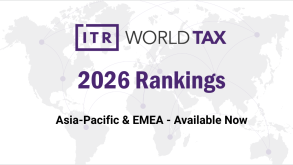The UAE Federal Tax Authority (FTA) has introduced Federal Decree-Law No. 47 of 2022, Chapter 10 of which focuses on “Transactions with Related Parties and Connected Persons”. In line with this, the FTA issued the Transfer Pricing Guide (the TP Guide) on October 23 2023, offering practical insights on transfer pricing regulations under the UAE Corporate Tax Law. Aligned with the OECD Transfer Pricing Guidelines for Multinational Enterprises and Tax Administrations, the TP Guide provides essential guidance on identifying related parties, conducting functional analysis, and pricing intragroup transactions.
With a comprehensive scope covering domestic and international transactions, businesses in the UAE must adhere to these rules for accurate reporting and taxation.
This article delves into the challenges faced by taxpayers and consultants in navigating the UAE transfer pricing rules and offers strategies to overcome them effectively.
Application of the arm’s-length principle to domestic transactions
Transfer pricing regulations in the UAE extend beyond multinational enterprise (MNE) groups to encompass transactions and agreements with related parties, including domestic entities, and connected persons within domestic groups. These transactions must adhere to the arm’s-length principle. The definition of a connected person includes owners, directors, officers, and individual related parties of the taxable person.
The scope of the transfer pricing guidelines in the UAE is broader compared with what the OECD guidelines generally seek to cover and compared with other jurisdictions, presenting a challenge for taxable persons in justifying the arm’s-length price for domestic transactions with owners, directors, officers, or individual related parties, and thus maintaining proper documentation. Common types of transactions subject to transfer pricing rules in the UAE include managerial remuneration, rent, dividends, and interest on loans among related parties or connected persons.
Compliance with these regulations for domestic transactions introduces complexity to business operations in the UAE, necessitating companies to meticulously assess and document their transfer pricing policies and practices to meet regulatory standards. Therefore, taxable persons should thoroughly evaluate and maintain supporting documentation to substantiate the arm’s-length price.
One of the practical challenges faced by UAE groups is the multifaceted structure of groups comprising multiple entities and transacting with each other very closely. When these group structures were set up, corporate tax or transfer pricing regulations did not exist in the region. Hence, the transactional framework was designed without keeping in mind the need for cross charge and proper reporting of transactions. However, with the transfer pricing regulations in place, it is a huge challenge for these groups to identify the transactions that come under the ambit of the arm’s-length requirement and, accordingly, set up transfer pricing policies. This may also result in a rethinking of business operations to some extent so that transactions between parties can reflect the fair pricing.
Unavailability of publicly accessible financial data for UAE region companies
A comparability exercise is at the core of transfer pricing analysis, regardless of the nature of a transaction. Hence, taxable persons are advised to prioritise utilising domestic comparables in their comparability analysis. Domestic comparables tend to have a higher degree of comparability in terms of market and economic circumstances compared with foreign comparables.
However, the absence of publicly accessible financial data for companies in the UAE region poses a significant challenge when seeking local comparable data. This challenge is more evident in the case of taxpayers where the sector in which they operate is not very big in the UAE. For example, the UAE has many companies operating in the oil and gas, real estate, construction, and financial and investment sectors. However, taxpayers operating in sectors such as IT, apparel manufacturing, and back-office support services may face significant challenges, as there would not be sufficient data available regarding similar companies to perform local benchmarking.
In instances where adequate data is not available domestically, taxable persons may explore regional or global comparables as alternatives. The recommended geographical order for sourcing external comparables is as follows: local market comparables, then regional (Middle East) market comparables, followed by comparables from other regions. While these comparables may not be as directly linked to the controlled transaction as local comparables, they can still provide valuable data and insights to facilitate a comprehensive comparability analysis. The same approach is advocated by the OECD guidelines and the TP Guide.
Benchmarking of managerial remuneration to substantiate the arm’s-length price
Compensation offered to executives and related parties in the form of salaries, bonuses, stock options, and other incentives is referred to as managerial remuneration. Management remuneration includes the amount paid by a company to its:
Owner/shareholders;
Directors;
Officers (CEO, CFO, president, vice president, division heads);
Related parties who are in senior management positions (includes family related within the fourth degree of kinship, including by way of adoption of guardianship); and
Associated or related-party companies, etc.
As previously mentioned, transfer pricing regulations in the UAE seek to cover domestic transactions, including managerial remuneration paid to connected persons. The likely rationale for covering a transaction with a connected person under the ambit of transfer pricing is that the salaries received by individuals are not taxable in the UAE. Hence, authorities wanted to prevent UAE companies from claiming an excessive tax deduction for managerial remuneration, as the remuneration paid by companies is deductible expenditure, while the remuneration received by a connected person is not taxable. Therefore, it is essential to conduct proper benchmarking to support the arm’s-length character of managerial remuneration.
Managerial remuneration is influenced by various factors, such as company performance, industry norms, individual performance, experience and expertise, responsibilities, market demand, company size and structure, shareholder input, economic conditions, and company culture.
In the business realm, assessing the market value of managerial remuneration is intricate. It involves determining the amount that would be paid to a third party for the same service under similar conditions. However, a key challenge lies in the scarcity of publicly accessible data on higher management remuneration, making it difficult to benchmark these transactions at arm’s length using the comparable uncontrolled price method. Furthermore, there are many dynamics in play that make finding the fair price of managerial remuneration a complicated exercise.
To address this challenge, the following approaches can be used.
Approach 1: Entity-wide net profitability testing
This involves comparing the operating margin earned by the taxable entity to that of similar uncontrolled comparable entities operating in the same industry. By doing so, one can infer whether the managerial remuneration paid by the taxable entity falls within an arm’s-length range, based on the profitability of comparable entities.
This reverse benchmarking method provides a practical approach to assessing the arm’s-length nature of managerial remuneration in the absence of directly comparable data, offering a reasonable means of compliance with UAE transfer pricing regulations.
An example scenario will help to illustrate the calculation of marginal remuneration at arm’s length using the given information:
| Particulars | Amount |
A | Revenue from operations | AED1,000 |
B | Cost of goods sold | AED600 |
C | Other operating expenses (excluding managerial remuneration) | AED300 |
D | Operating profit (A-B-C) | AED100 |
E | Operating profit margin (D/A*100) | 10% |
Now, let us compare this operating margin with the margin earned by the uncontrolled comparable taxable person (say, 8%).
In the above example, the taxable person's operating margin (10%) exceeds the operating margin of the uncontrolled comparable taxable person (8%). The difference between the two margins is the maximum amount of remuneration that can be paid by the taxable person to earn arm’s-length profit (i.e., AED20).
Hence, in light of the above, the taxable person should strive to achieve an operating profit margin of 8% of sales after the payment of management salaries.
Approach 2: Employees cost comparison
Under this approach, similar to the first approach, a taxpayer may attempt to compare its employee cost ratio (percentage of employee cost as a total cost) with the employee cost ratio of companies operating in a similar industry. This may give a broad idea to the taxpayer as to whether the benchmark for employee costs is within the overall range of the employee cost of similar companies.
The above approaches are useful in scenarios where the transactions pertaining to payment to connected persons are voluminous in nature and it is not practical for an entity to evaluate the salary benchmarking for each and every connected person.
Benchmarking AED-denominated loans without much comparable data in the recognised database
While benchmarking AED-denominated loans, taxpayers are often faced with limited comparable data in recognised databases, and it can be challenging to match all the key comparability criteria, such as a sufficient number of third-party loans issued in the same country or currency. In such cases, comparability adjustments may be necessary to improve the reliability of the third-party loan comparison.
One effective method to address this issue is through swapping. Swapping involves adjusting the interest rate charged by a comparable loan to align it with the loan under consideration. This adjustment is particularly useful when the interest rates of the comparable loan concern a different currency.
By conducting swapping, the interest rates of the comparable loan and the loan being analysed can be harmonised, allowing for a more accurate comparison. This approach enhances the comparability and reliability of the benchmarking analysis, even in situations where direct matches are not readily available in a database.
In summary, swapping offers a practical solution for dealing with limited comparable data in benchmarking AED-denominated loans, enabling a more robust analysis and ensuring compliance with transfer pricing regulations.
Transactions or issues that are prone to transfer pricing litigation
Transfer pricing regulations are still new in the UAE region and the next few years might witness the FTA focusing on transfer pricing documentation compliance by taxpayers, such as whether the taxpayer has maintained the local file/master file, as applicable, or whether the disclosure form was filed in order with accurate reporting of transactions. Hence, transfer pricing audits are likely to emphasise the importance of taxpayers maintaining transfer pricing documentation.
However, as a few years pass by, taxpayers may expect a surge in issue-specific scrutiny by the FTA. On the basis of the authors’ experience of handling litigation with Indian tax authorities, the following are the issues or transactions that may see scrutiny by the FTA.
Intragroup services
It cannot be denied that intragroup services are the backbone for the operations of any MNE group. However, scrutiny around intragroup services is also very common, especially in the case of taxpayers that are availing the intragroup services. Tax authorities often expect taxpayers to prove the need for, and benefit of, the services. While keeping a documentation trail may be helpful in the case of routine intragroup transactions such as IT support, back-office support, and procurement support, transactions such as marketing support services, employee training services, and management consulting services are often difficult to be justified before the tax authorities owing to their non-direct relationship with the revenue of the service recipient.
Royalty payouts
Royalty payments against the use of an intellectual property licence are often seen as a tool to shift profits outside a country and viewed with a suspicious eye by the tax authorities.
Loss-making companies
Litigation around the transfer pricing policies of loss-making companies is very frequent. While it is common for taxpayers operating in a volatile industry or a cyclical business to incur losses, incurring losses in a business that is operating in an industry that is otherwise profitable is considered a profit-shifting practice by tax authorities. Taxpayers are advised to use a comparability adjustment in these instances.
Advertisement, marketing, and promotion expenses
The advertisement, marketing, and promotion (AMP) expenses issue is one of the most complex in transfer pricing, wherein tax authorities may allege that the UAE subsidiaries of a foreign parent, particularly those engaged in distributing or manufacturing goods under the brand name of a foreign parent, are contributing to the enhancement of a brand name and, accordingly, the AMP expenses of the UAE subsidiary should be reimbursed by the foreign parent, along with a commensurate return.












